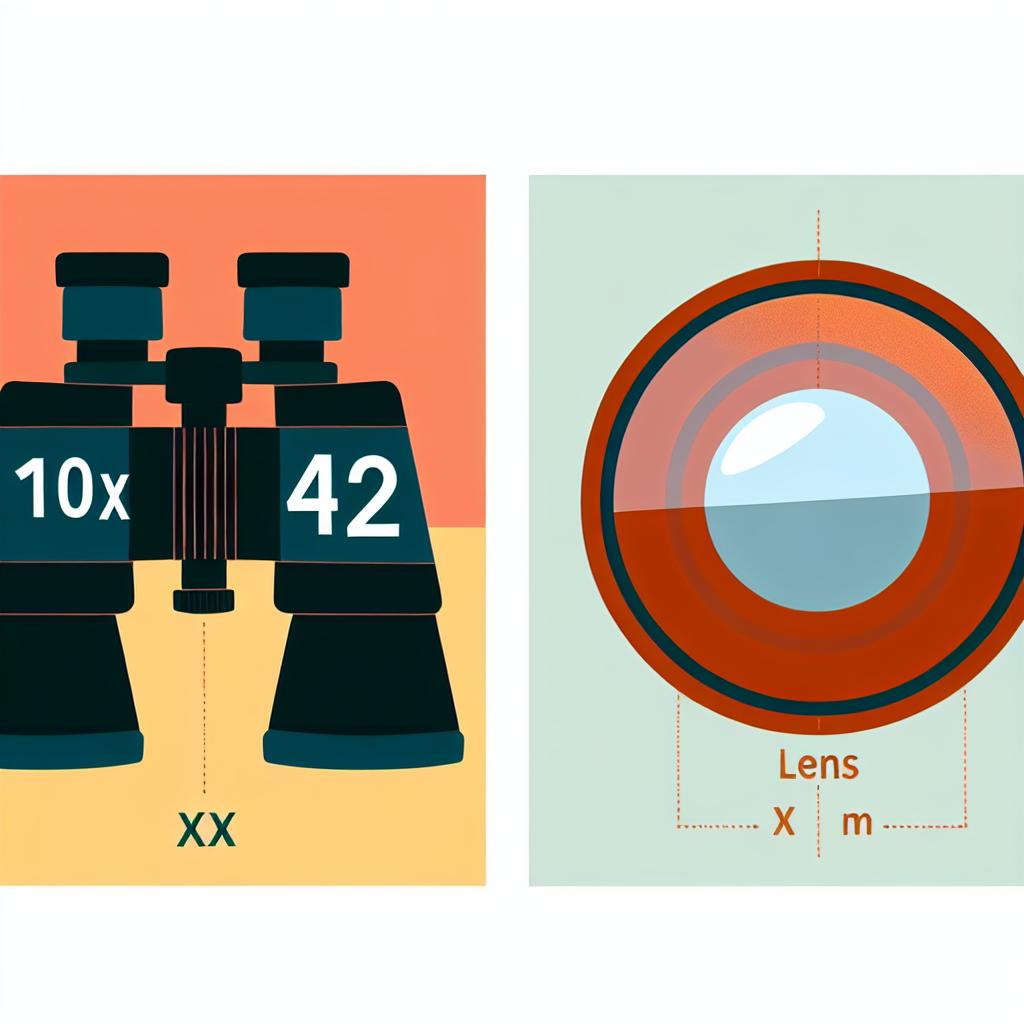Understanding the Numbers on Binoculars
When you study a pair of binoculars, you typically observe two numbers separated by ‘x’, such as 10×42. At first glance, these numbers might seem enigmatic, but they convey crucial details regarding the binoculars’ capabilities. Let’s delve deeper into what these numbers signify.
The Magnification Factor
The initial number, in this context, ’10’, signifies the magnification factor. This value is the most straightforward measure of how many times nearer the viewed object appears than when you would see it with the naked eye. For example, a magnification level of 10x implies that the object appears ten times closer than it would to the unaided eye. Magnification is a critical aspect to evaluate when selecting binoculars, as higher magnification might lead to less stable images if the binoculars are handheld, partly due to the natural tremor in human hands. When the magnification is too high, even a tiny hand movement is substantially magnified, causing jittery images. Therefore, if you anticipate substantial hand-held use, you may want to consider the balance between needed magnification and image stability when making a choice.
The Objective Lens Diameter
The subsequent number, ’42’ in our reference, indicates the diameter of the objective lenses in millimeters. These lenses are situated at the binoculars’ front section. A lens with a larger diameter permits more light to enter, which is vital for visibility in dim lighting situations such as early morning, late evening, or cloudy conditions. Hence, if your plan involves using binoculars in diverse lighting circumstances, selecting a model with a larger objective lens to allow more ambient light could be advantageous. A large diameter objective lens enhances brightness, making it suitable for activities like star gazing or observing faint wildlife.
Relationship Between Magnification and Objective Lens Diameter
The combination of these two indicators, 10×42 in our example, offers insights into the binoculars’ functional scope and intended application. While magnification influences the proximity and detail with which you can view an object, the objective lens diameter impacts the brightness and field of view. For images that are both detailed and bright, one might opt for higher values for both dimensions. However, it’s important to maintain a balance between size, weight, and image steadiness. Larger lenses inherently result in heavier binoculars, potentially unsuitable for prolonged use or for situations where portability is essential. Users must decide if the advantages of improved light gathering and increased detail outbalance the drawbacks of extra weight and potential fatigue.
Field of View Considerations
These values also affect the field of view, which is the extent of the area you can perceive through the binoculars. Generally, an increase in magnification leads to a decreased field of view. For instance, a 10×42 model is likely to offer a narrower field of view than a 7×42 model. The choice of binoculars with an optimal balance between magnification and field of view is contingent on the activity for which they will be used. Activities like birdwatching might benefit from a wider panorama to track swiftly moving subjects, while stationary events or stargazing might prioritize closer, more focused detail. Considering one’s primary use of the binoculars will aid in finding the ideal magnification to field of view ratio.
Practical Applications and User Preferences
Different activities and needs might lead users to favor varying binocular configurations. For instance, birdwatchers might find a higher magnification beneficial for observing birds from a distance. Yet, for hiking or traveling, a lighter, more compact model may be preferable, as it offers ease of transport without the burden of additional weight. Similarly, hunters often require a high-quality field of view to scan their surroundings swiftly.
For those interested in astronomy on a casual basis, choosing a binocular with a moderate magnification and a larger objective lens diameter catalyzes better performance under a starry night sky, capturing more detail in celestial bodies.
Understanding these numbers assists users in making an educated choice when selecting binoculars, ensuring the instrument meets your viewing anticipation and style. With a selection of resources available both online and in specialist shops, individuals can further explore specifications tailored to their specific activities and preferences. This knowledge gives you the upper hand in ensuring your binoculars will serve their intended purpose effectively, providing clear, steady, and vibrant images no matter the situation.
Ultimately, the numbers on binoculars serve as more than mere identifiers; they play a pivotal role in defining the performance potential and application suitability of the binoculars. Hence, being familiar with these numbers’ implications is fundamental for anyone considering purchasing or using binoculars, regardless of whether your interests are primarily observational or leisure-based.
This article was last updated on: May 3, 2025


